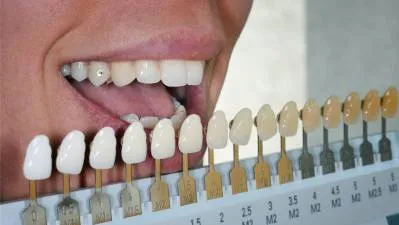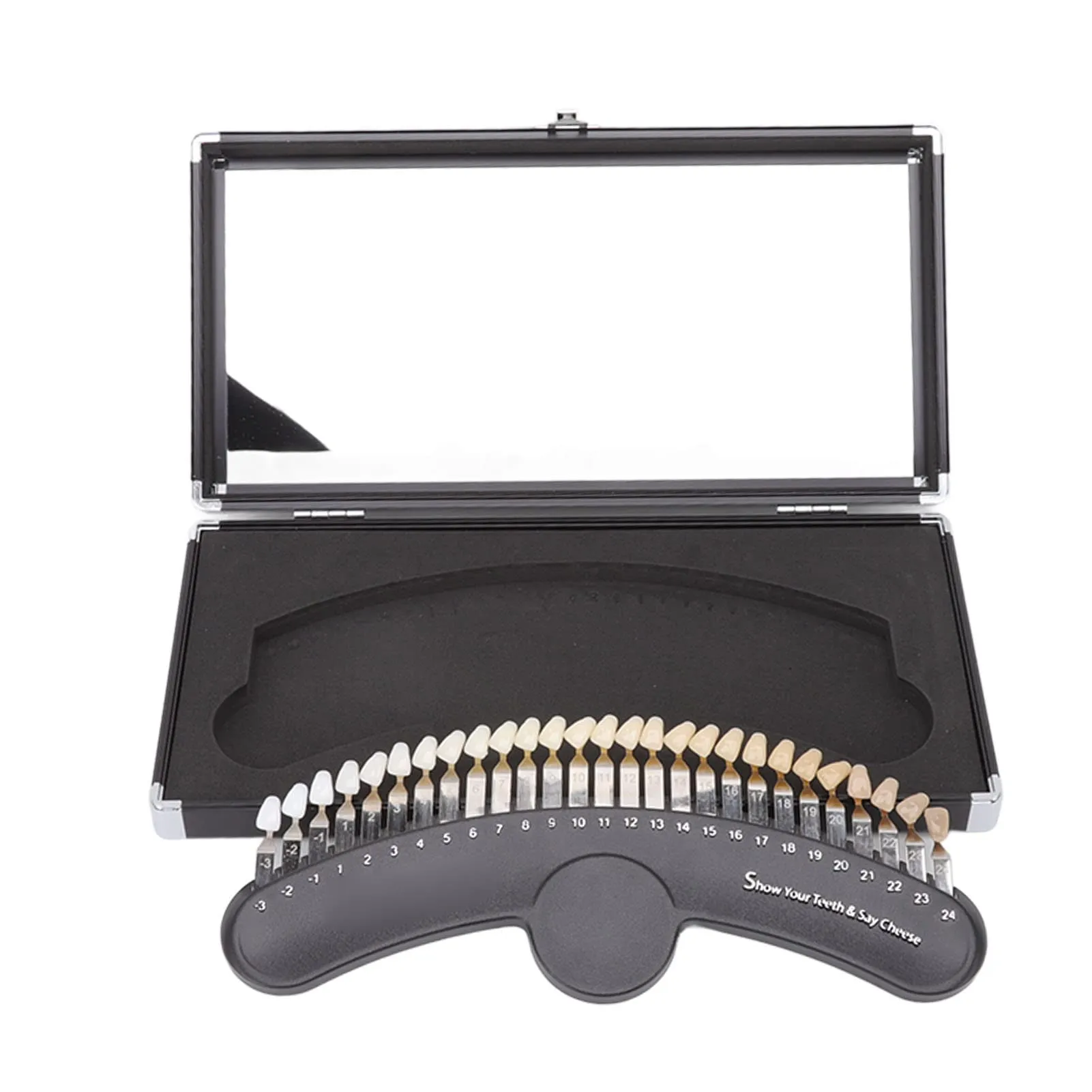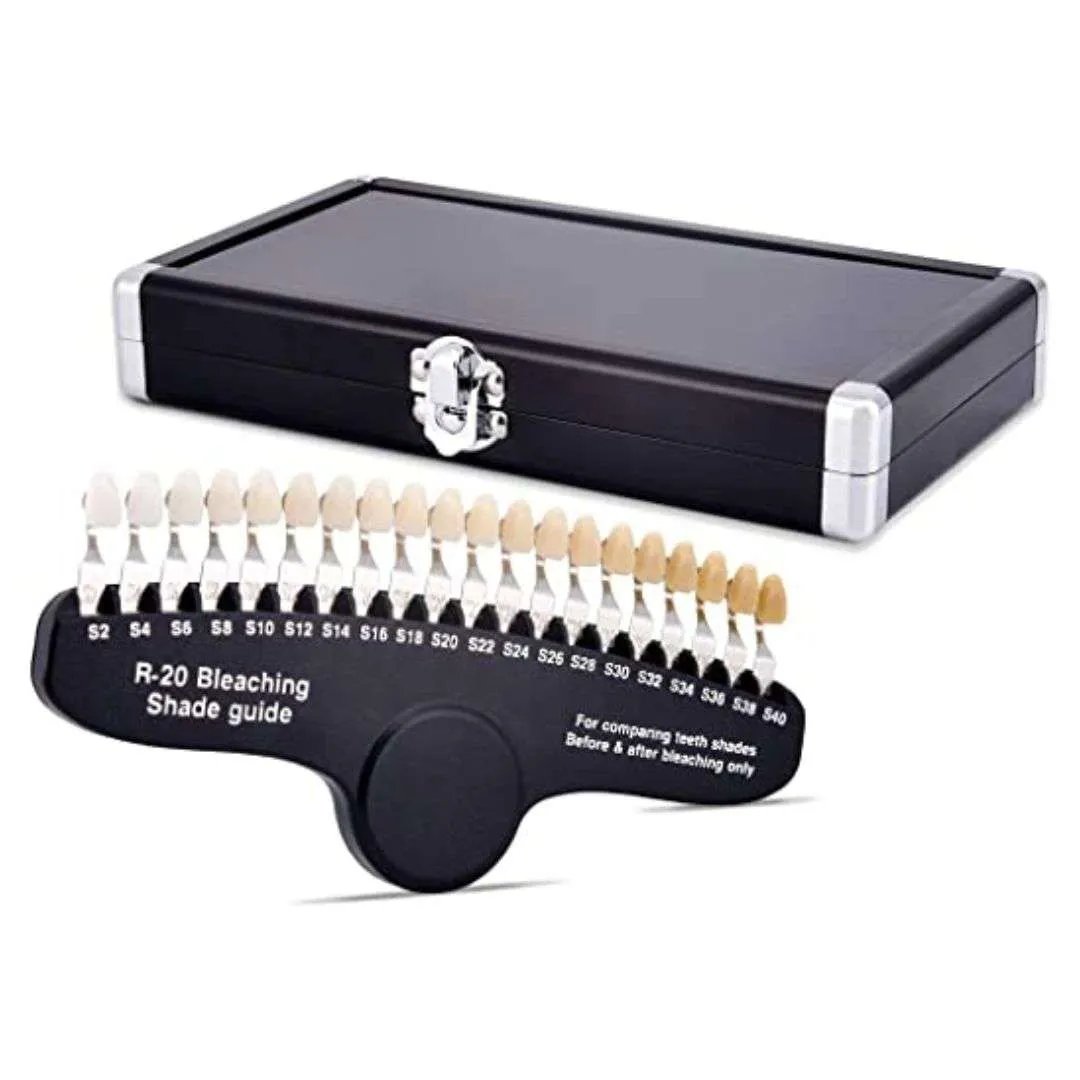Understanding Teeth Whitening Shades
Embarking on a teeth whitening journey can be exciting, but navigating the various shades and choosing the right one can seem daunting. This comprehensive guide aims to demystify the world of teeth whitening shades, providing you with the knowledge to make informed decisions and achieve the smile you’ve always desired. Understanding the nuances of teeth shades is crucial for setting realistic expectations and achieving the best possible results. Whether you’re considering in-office whitening, at-home kits, or simply curious about the science behind a brighter smile, this guide will provide you with the necessary information. The journey to a perfect smile involves understanding the terminology, the guides used, and how your individual characteristics come into play when it comes to teeth whitening.
The VITA Classical Shade Guide
The VITA Classical Shade Guide is the industry standard for measuring and communicating tooth shades. It’s a crucial tool used by dentists and dental professionals to accurately assess a patient’s natural tooth color and to match the shade of restorations, such as crowns and veneers. This guide categorizes shades into four main groups, identified by letters A, B, C, and D, each representing different color variations. Within each group, there are several numbered shades, ranging from lighter to darker. This allows for a highly precise description of tooth color, ensuring consistency and accuracy in dental treatments. Familiarizing yourself with this system provides a common language for discussing and achieving desired teeth whitening results. Let’s delve into each of these shade groups to better understand their characteristics.
Shade Guide A

Shades in the A group typically represent reddish-brown hues. These shades are often associated with teeth that have a natural, warm tone. The intensity of the reddish-brown varies across the shades, ranging from lighter to darker. A1 is usually the lightest shade within this group, while A4 is the darkest. The A shades are frequently seen in individuals with naturally darker teeth or those with a higher degree of staining from things such as coffee or smoking. Recognizing the A shades helps in identifying the starting point for teeth whitening and setting appropriate expectations for the final results. Your dentist will use the A shades to best match your existing teeth.
Shade Guide B
The B shades are characterized by reddish-yellow hues. These shades often appear in teeth that have a slightly brighter, more vibrant appearance. Similar to the A shades, the B shades have a range of intensities. B1 is the lightest shade in this group, often considered the most desirable and sought after, while B4 is the darkest. Individuals with a natural inclination towards a brighter smile may find that their teeth fall within the B shade range. Understanding the B shades enables you to communicate your preferences to your dentist effectively and helps establish what is achievable with teeth whitening procedures. The B shades often represent a brighter, more youthful look.
Shade Guide C
The C shades typically encompass greyish-yellow hues. Teeth with these shades often appear less vibrant and can have a slightly duller appearance. The C shades range from light to dark, with C1 being the lightest and C4 the darkest. The C shades are often associated with teeth that have been affected by certain medications or have experienced internal staining. When considering teeth whitening, it’s important to understand that the effectiveness of the treatment can vary depending on the specific shade and the cause of the discoloration. The C shades usually require more extensive whitening treatments to get a better result. Understanding the C shades is useful in managing expectations for treatment outcomes.
Shade Guide D

The D shades often represent reddish-grey hues. These shades are frequently found in teeth that have a darker, less vibrant appearance. The D shades include varying intensities, but in general, they are darker than the other shade groups. D2 and D4 are the more common shades within this group. Like other shade groups, the D shades are crucial for accurate assessment and treatment planning. Knowing your initial shade helps your dentist choose the right whitening method and estimate the potential results. If your teeth fall within the D shade range, it’s crucial to discuss expectations with your dentist and understand the steps involved in achieving the desired results. The D shades often require the most amount of treatments to achieve whitening.
Beyond the VITA Shade Guide
While the VITA Classical Shade Guide is the cornerstone for teeth shade assessment, other shade guides and techniques exist. Some dentists might utilize more advanced digital shade matching systems that provide even more precise color analysis. These systems can capture subtle variations in tooth color that might be missed by the naked eye. Furthermore, custom shade guides can be created to meet the unique needs of the patient. Beyond the physical guides, an understanding of the enamel translucency and the underlying dentin color is essential. These factors can affect the overall appearance of the teeth and the final result of the whitening process. Keep in mind that the shade guide is just a reference. The actual result may be different based on your individual characteristics.
Popular Teeth Whitening Treatments
There are various teeth whitening treatments available, each offering different levels of convenience, cost, and effectiveness. The right choice depends on your individual needs, the severity of your discoloration, and your lifestyle. Understanding the pros and cons of each option allows you to make an informed decision and get the best possible results. From professional in-office treatments to convenient at-home kits, the options are vast. Consulting with your dentist is the first step to determine which option best suits your needs. Let’s explore some of the most popular treatments.
In-Office Teeth Whitening

In-office teeth whitening, also known as professional teeth whitening, is a procedure performed by a dentist in their clinic. This treatment typically involves the application of a high-concentration bleaching agent to the teeth, often activated by a special light or laser. The entire process usually takes about an hour or two, and patients can see significant results in a single session. In-office whitening is the fastest way to achieve a brighter smile and is ideal for those who want immediate results. The dentist can monitor the process closely and take measures to minimize any potential sensitivity. The cost is usually more than at-home options, but it can be worth it if you are looking for the fastest and most effective treatment.
At-Home Teeth Whitening Kits
At-home teeth whitening kits provide a convenient and more affordable alternative to in-office treatments. These kits typically include custom-fitted trays, whitening gel, and instructions for use. The dentist will often take impressions of your teeth to create the trays, ensuring a snug fit for optimal results. You’ll apply the gel to the trays and wear them for a specific period, as directed by your dentist. The length of time depends on the concentration of the whitening agent and the severity of your discoloration. At-home kits usually offer more gradual results than in-office whitening, but they can be highly effective with consistent use. It is a good option for those who want a cost-effective method and are prepared to commit to the whitening process over several weeks. Always follow the directions from your dentist.
Whitening Toothpaste
Whitening toothpastes are an easy way to brighten your smile as part of your daily oral hygiene routine. These toothpastes typically contain mild abrasives or chemicals that help remove surface stains from the teeth. While they are not as effective as professional treatments, whitening toothpastes can help maintain the results of other whitening procedures and prevent new stains from forming. They can also be used to gradually improve the appearance of your teeth over time. It’s important to choose a whitening toothpaste that is gentle on your enamel to avoid causing damage. Look for toothpastes that are approved by dental associations. Whitening toothpastes are a good option for ongoing maintenance.
Factors Influencing Teeth Shade

Several factors can influence the natural shade of your teeth and the effectiveness of whitening treatments. Understanding these factors helps you set realistic expectations and choose the most appropriate treatment for your needs. The color of your teeth is not solely determined by the genetics or lifestyle choices. Everything from your diet to your age can affect the results you achieve. Knowing the factors that influence your teeth color is important in order to choose the best treatment.
Diet and Lifestyle
Your diet and lifestyle choices play a significant role in the shade of your teeth. Foods and beverages with strong pigments, such as coffee, tea, red wine, and berries, can stain the enamel over time. Smoking and tobacco use are also major contributors to tooth discoloration. Maintaining a balanced diet, limiting staining foods, and avoiding tobacco products are all key steps in maintaining a bright smile. After teeth whitening, it is important to avoid these staining foods in order to keep your teeth white for a longer amount of time. The choices you make on a daily basis impact your teeth shades.
Ageing
As you age, the enamel on your teeth naturally thins, making the underlying dentin (which is yellowish) more visible. This can cause your teeth to appear darker over time. Additionally, the cumulative effects of staining foods and beverages can contribute to the overall discoloration of your teeth. The aging process is a natural part of life, but teeth whitening can help combat this. Teeth whitening is a great way to maintain a youthful smile as you age. Regular dental checkups can also help monitor and address any age-related changes in your teeth. It’s important to manage your expectations because your teeth will naturally darken as you get older.
Dental Health and Existing Treatments

The presence of dental health issues, such as cavities or root canals, can also impact your teeth shade. Fillings, crowns, and veneers may also affect the appearance of your teeth. The material used in restorations is often resistant to whitening treatments, and this can create an uneven appearance. Before undergoing teeth whitening, it’s important to address any existing dental issues and discuss your treatment options with your dentist. Your dentist can provide guidance on the best approach to achieve an even, brighter smile. This includes dealing with the current treatments you may already have. Some procedures may not be suitable for whitening, and you may need to discuss your options with your dentist.
Choosing the Right Shade for You
Choosing the right shade for your teeth whitening treatment is a personalized process. Factors such as your natural tooth color, the results you want to achieve, and your overall facial aesthetics all play a role in making this decision. Consulting with a dental professional is crucial for receiving tailored advice and making the most suitable choices. The end goal of teeth whitening is to improve your smile and confidence. By having a realistic understanding of your teeth and the treatment, you can choose the correct shade.
Consulting with a Dentist
Consulting with a dentist is the most important step in the teeth whitening process. They can examine your teeth, assess your overall oral health, and recommend the most appropriate whitening treatment for you. They will also be able to determine your current tooth shade using a shade chart and discuss the results you can realistically expect. Your dentist can provide professional guidance and personalized recommendations based on your specific needs. Discussing your desired shade and aesthetic goals with your dentist is important to ensure you are both on the same page. Your dentist will be able to help you make informed decisions and help achieve the best outcomes for your teeth whitening journey.
Realistic Expectations

It’s important to have realistic expectations about the results of teeth whitening. While teeth whitening can significantly improve the appearance of your smile, it cannot always achieve a perfectly white shade. Factors such as your natural tooth color, the severity of your staining, and the chosen treatment can all affect the final outcome. Your dentist can help you determine what is achievable for your specific situation. Understanding the limitations of teeth whitening and setting realistic goals ensures that you are satisfied with the results. It’s also important to remember that the shade of your teeth may vary depending on the lighting and the angle at which you view them. Your teeth will not be as white as the shade chart. By having realistic expectations, you can choose a treatment that is suitable for you.
Maintaining Your Whitened Shade
Once you’ve achieved your desired tooth shade, maintaining the results is essential. This involves practicing good oral hygiene, making mindful dietary choices, and scheduling regular dental checkups. By following these steps, you can prolong the life of your results and keep your smile looking bright and healthy. Consistent care is key to preserving the results of your whitening treatments. Post-whitening care is just as important as the treatment itself.
Post-Whitening Care
After teeth whitening, your teeth are more susceptible to staining for a short period. During this time, it’s crucial to avoid foods and beverages known to cause staining, such as coffee, tea, red wine, and berries. You should also avoid smoking and tobacco use. Additionally, you should maintain a good oral hygiene routine, including brushing your teeth twice a day with a whitening toothpaste and flossing daily. Your dentist may also recommend using a special mouthwash or other products to help protect your teeth from staining. By following post-whitening care instructions, you can extend the longevity of your whitening results and keep your smile bright for a longer period of time.
Regular Dental Check-ups

Regular dental check-ups and cleanings are essential for maintaining a healthy and bright smile. During your check-up, your dentist can assess the condition of your teeth and gums, remove any plaque or tartar buildup, and provide professional advice on maintaining your oral health. Your dentist may also recommend touch-up whitening treatments to maintain your desired shade. Regular check-ups can also help detect any potential dental issues, such as cavities or gum disease, early on. These issues can affect the shade of your teeth. By scheduling regular dental check-ups, you can ensure that your smile remains bright and healthy for years to come. Your dentist will give you the best options for your teeth.
